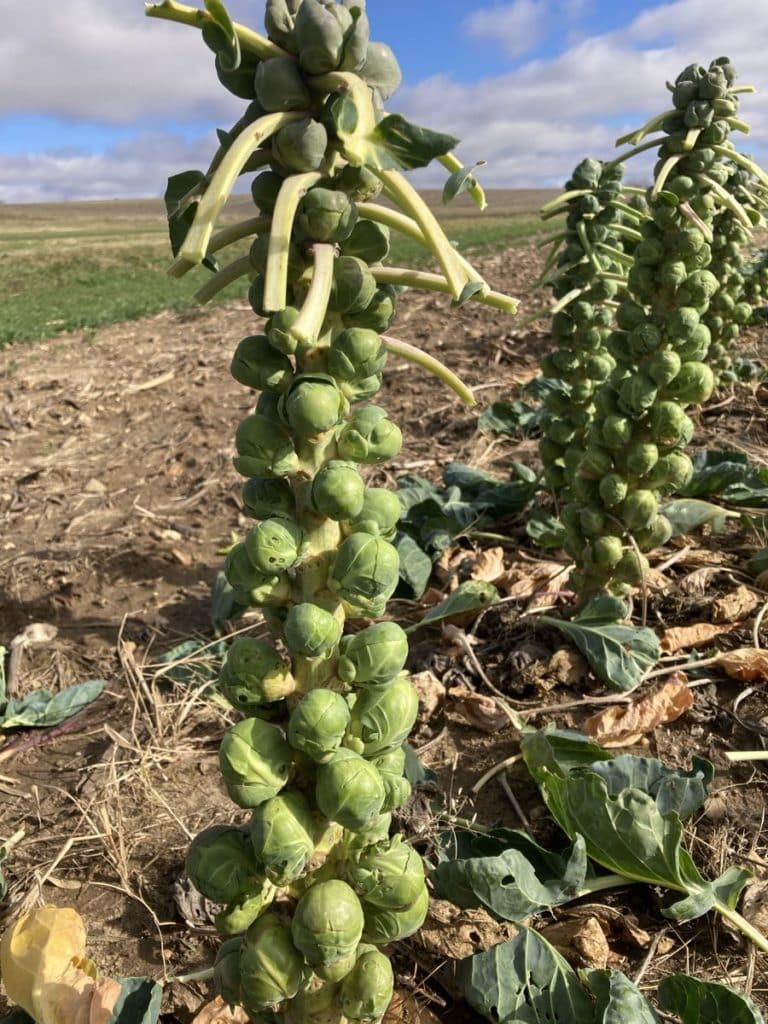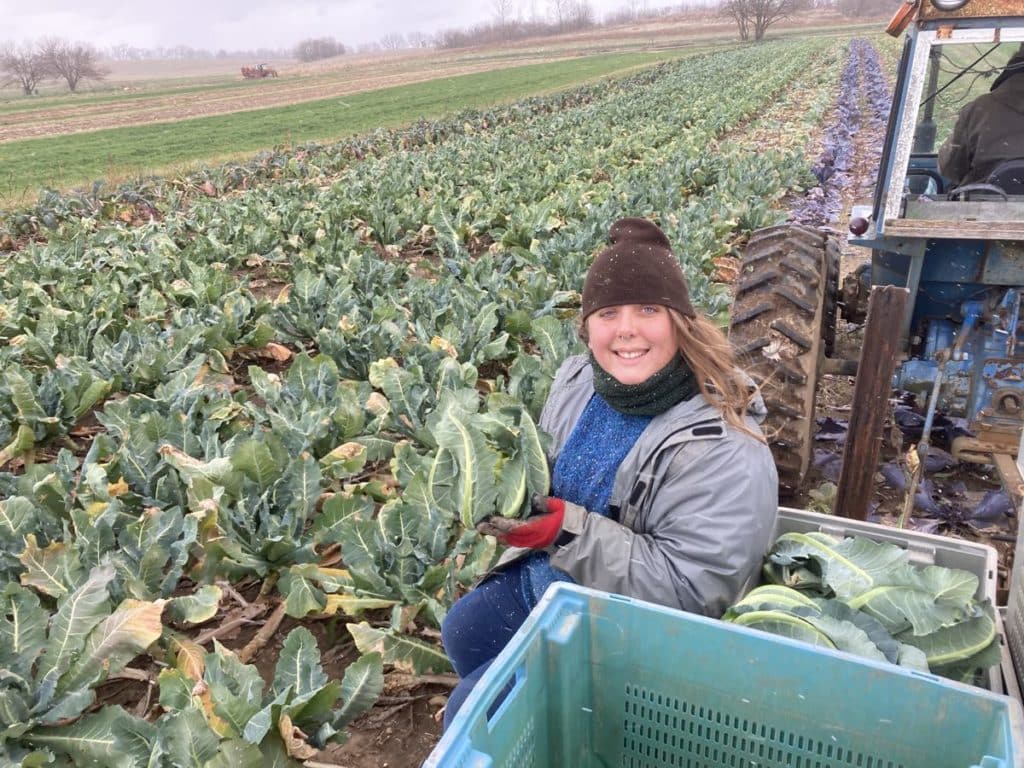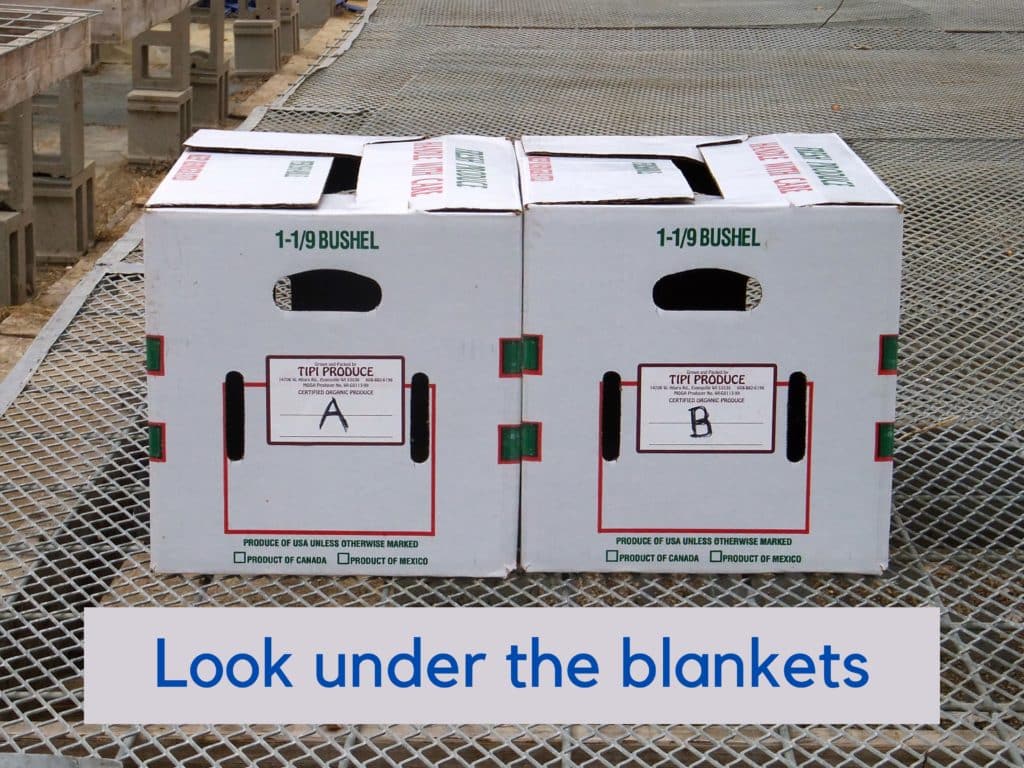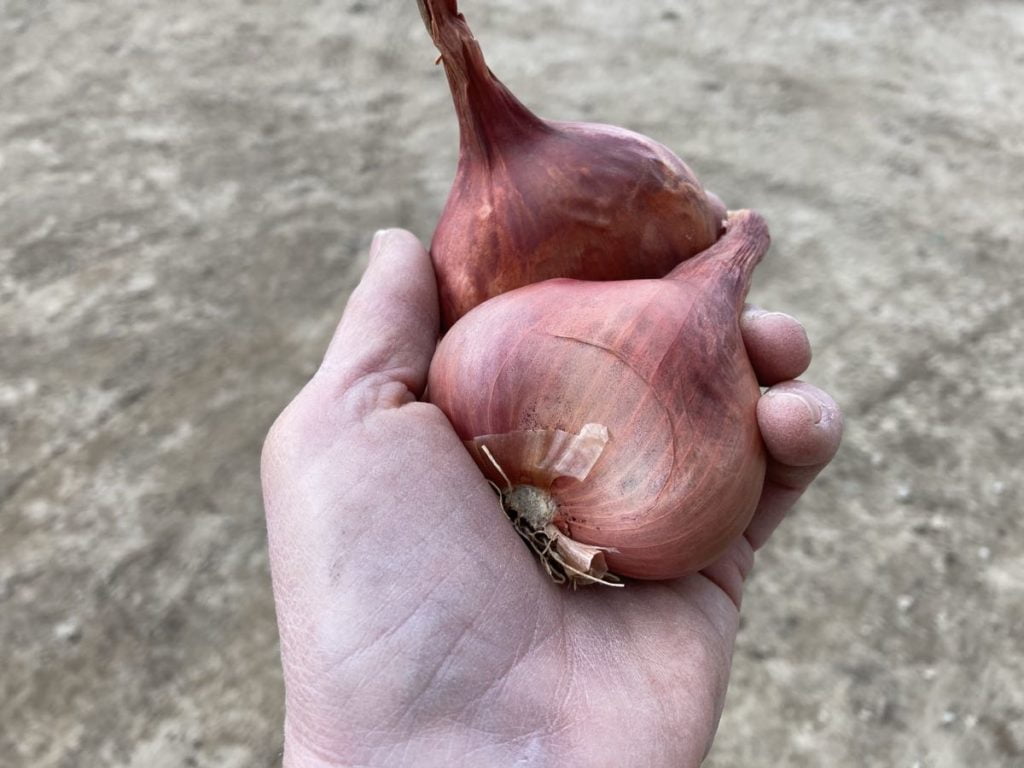Storage Share, 2022
- On: November 16, 2022
 0
0

You each get one full Brussels sprouts stalk. It took the entire season to grow these amazing stalks. This field was planted in June. We had to cut the stalks in half to fit them in the boxes.

On Saturday, Bekah helped us harvest your cauliflower in the snow. We rarely ask crew members to work on the weekend but couldn’t risk the cauliflower on cold nights. What a trooper!
Storage Share this week

Your produce is in one box labelled “A” and one box labelled “B”. Bring lots of bags and containers.
Things you need to know about your winter share
* Your delivery will consist of two different boxes, labeled “A” and “B”. Take produce from one “A” box and one “B” box. The boxes contain different vegetables. The stacks may be covered with blankets. Look around.
* Please pick up your boxes on the day of delivery, during the normal hours for your site.
* Bring extra bags or containers this time. Leave the Tipi boxes at your site, take the produce home in your own bags/containers.
* If you send someone to pick up your produce, make sure they know what to do.
Strategy
We hope you enjoy this shipment of veggies. Strategize to use them well, as some will last longer than others.
* These are the most perishable vegetables: Broccoli, cauliflower.
* These are the next-most perishable: Brussels sprouts, fennel. Keep an eye on your butternut, onions, potatoes and sweet potatoes. The last two are susceptible to drying out. Expect the largest butternuts to last the longest.
* Onions are next in line. We sent you our best long-storing onions but you should still store them cool if possible (but don’t let freeze). If you don’t have room in your fridge, find a cool spot in your house.
* These will last the longest: beets, cabbage, carrots, celeriac, daikon, garlic, parsnips and shallots.
Veggie List
Storage Share, Nov. 17/18, 2022 (Th/Fri sites)
Box “A”
Refrigerate everything in this box.
Broccoli, 2.25 – 2.5 lb
Brussels sprouts, on the stalk
Cabbage, 1 head
Carrots, 6 lb mixed orange, red, yellow & purple
Cauliflower, 1 medium head
Celeriac, 1 large
Daikon radishes, white & purple
Fennel, 2 bulbs
Parsnips, ~2 lb
Box “B”
Everything in this box (except the beets) can be stored cool or at room temperature. See notes below for more detail.
‘Autumn Frost’ winter squash
Butternut squash, several
Sweet potatoes, ~8 lb
Beets, 3 lb
Onions, red & yellow, 5 lb total
Russet potatoes, 5 lb
Yellow potatoes, 5 lb
Shallots, ~1/2 lb
Garlic, 3 or 4 bulbs, some bulbs will be split into cloves (in shallot bag)

Shallots. Yours are packed in a paper bag with the garlic.
Beets – Refrigerate in a bag or container. Beets will store for two months or longer.
Broccoli – Refrigerate and eat soon.
Brussels sprouts – Eat within 2 to 3 weeks.
Cabbage – Refrigerate. You can cut off sections as needed. Once cut, use within two weeks.
Carrots – Refrigerate in a plastic bag. Will keep for several weeks.
Cauliflower – Refrigerate. These should store for two weeks.
Celeriac – Will store for months in your fridge. Cut off chunks as needed. Peel before using. I find it easiest to cut the celeriac into flat slices, then peel.
Daikon radishes (white and purple) – Cover and refrigerate. They are susceptible to drying out in your fridge so put them in a container or bag. If the skins look dry, a quick peel freshens them up.
Fennel – Cover and refrigerate.
Garlic – Store at room temperature. Some of your bulbs might be in halves, leftover from when we cracked nice bulbs for planting.
Onions: Refrigerate or store in a cool, dark spot and protect from light. Exposure to light stimulates sprouting.
Parsnips (These look like large white carrots.) – Refrigerate in a plastic bag. Parsnips will store for several months but will darken in color. That is a harmless change.
Potatoes – Can be stored at room temperature or in a cool spot, but must be kept in the dark so they do not turn green. A cloth or loose plastic bag draped over the paper bag will slow moisture loss, but do not close the plastic bag. Potatoes store longer if kept cool. Around 40 – 50 F is ideal. These organic potatoes were grown by the Igl family near Antigo.
Russets – We got the big ‘baking’ grade so you have nice bakers for Thanksgiving. Excellent for baked or mashed potatoes.
Yellows – These are good all-purpose potatoes.
Shallots (look like small red onions) – Good for salad dressing. We’re still learning how to grow shallots and are thrilled to have a small bag for everyone!
Sweet potatoes – We’re sending a mix of three indistinguishable varieties, Beauregard, Covington and Orleans. All have excellent flavor and sweetness. Store at room temperature, no lower than 55 F, but 60+ F is better. Keep them on your kitchen counter where it’s easy to keep an eye on them. I like to keep ours in a paper bag so they don’t dehydrate. Cook promptly if they start to soften. The roots come in a wide ranges of sizes and all are good.
WINTER SQUASH – Store all winter squash cool and dry. 60 F is ideal. Do not put in a plastic bag. Check your squash regularly and eat promptly if flaws develop.
Autumn Frost (frosted pumpkin) – This beautiful frosted squash has both pumpkin and butternut squash breeding. It cooks and tastes like an unusually good butternut, with rich, smooth texture. The skin is edible.
Butternut winter squash (All sites; tan, oblong) – We’ve sent several varieties, some of which store better than others. Expect the largest butternuts to store the longest. If your butternuts show signs of drying or wrinkling, use them promptly. They will still taste great, but it’s a sign that they are nearing the end of their storage life. Remember, you can cook, mash and freeze the squash for future use. I find that you can refrigerate cut raw squash for up to one week. This runs counter to the accepted way to store squash, but is useful if you want to cook just half a squash. Some of them are big!
Safety tip: Microwave your squash for one to two minutes before cutting or peeling. This softens the squash and makes a squash easier and safer to cut.
Thanksgiving Menus
It’s time for our annual Thanksgiving menu round-up! Right now, websites are loaded with great recipes suited to your Storage Share vegetables. Peruse and bookmark soon. The Thanksgiving collections are taken down quickly after the holiday but individual recipes are not. This is a good chance to gather recipes to try this winter. With one exception, no new dishes will make it to our Thanksgiving table – we already have too many competing favorites! See below for the exception.
Smitten Kitchen
You could begin and end your Thanksgiving planning with Deb Perelman. She’s an amazing cook who publishes workable recipes. She has an extensive list of Thanksgiving dishes collected over the years. I really trust her recipes.
Food52.com
I recommend one corner of the Food52 Thanksgiving spread. Honestly, the rest of their Thanksgiving offerings are over-commercialized this year but this one section is great: “Our 76 Best Thanksgiving Side Dishes to Complete the Feast, The greatest hits plus new classics”, curated by Eric Kim.
I’m intrigued by the interesting sauces offered.
eg, Blistered Green Beans & Sweet Potatoes With Tahini. I’ve never thought to top roasted sweet potatoes with a lemony tahini sauce!
eg, Roasted Potato Salad With Mustard-Walnut Vinaigrette .
Love & Lemons
They have a beautiful collection of “50 Thanksgiving Side Dishes”.
Maple Balsamic Roasted Brussels Sprouts
Our daughter Sophie announced that she is taking over Brussels sprouts this Thanksgiving, booting our treasured Brussels Sprouts in Mustard & White Wine Vinaigrette dish. She tells me that I should “just stop steaming Brussels sprouts.” She prefers roasted. Such strong opinions! This is a ‘non-recipe’ recipe. She tells me that it gets devoured by twenty-somethings at potlucks. What a great recommendation.
Preheat oven to 425 degrees.
Cut Brussels in half and put on a baking sheet.
Toss with maple syrup, balsamic vinegar, olive oil, salt, pepper, and garlic powder until the glaze tastes how you want it.
Roast at 425.
Taste halfway through cooking to see if it needs more glaze or seasoning.



